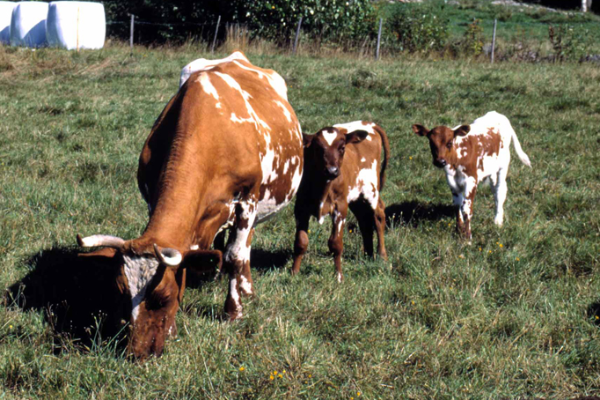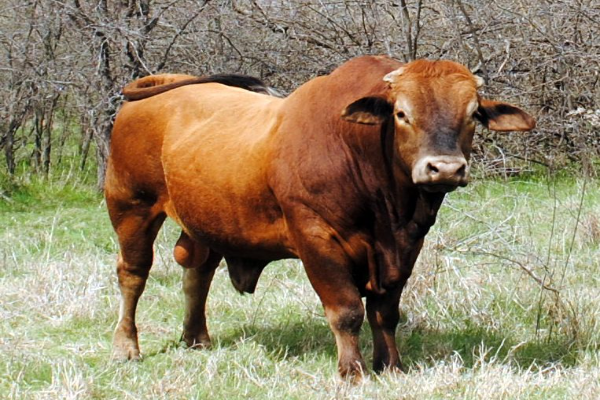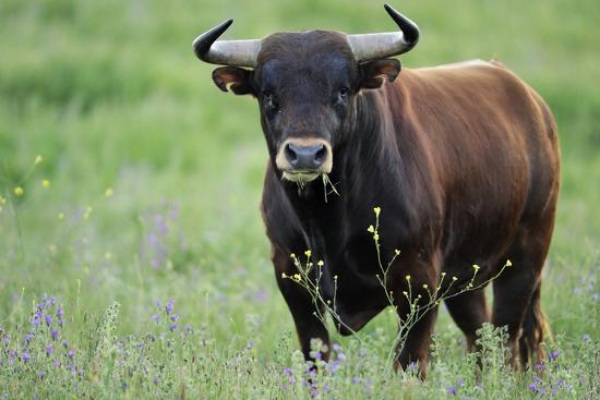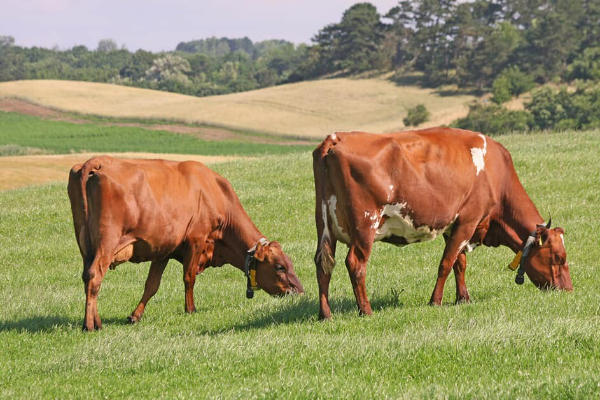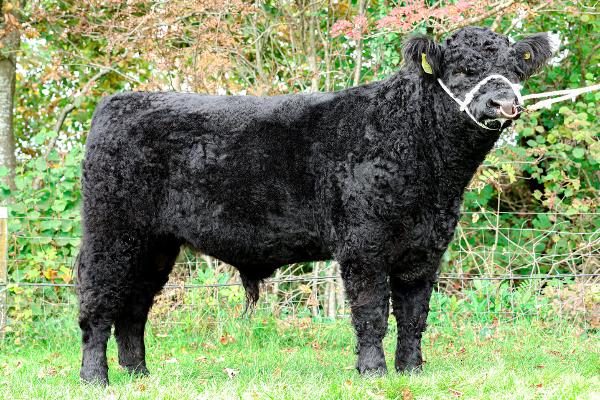Allmogekor Cattle
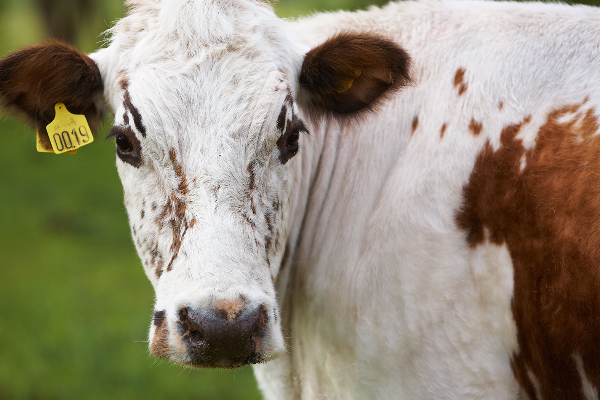
The Allmogekor Cattle are the traditional Swedish breeds of cattle. The Allmogekor word means roughly "rustic cattle".
The
Swedish word "or" (cows) is the plural form of "ko" (cow),
"Allmoge" is the peasant class. The name can therefore be
translated as "Bauernstandskuh" as" Bauernkuh" or
simply as" Landkuh".
The Swedish Samarbetsgruppen Lantrasforum (Community Landrace Forum) lists on its red list of all breeds studbook out of Allmogeko in the highest degree of danger, "seriously threatened".
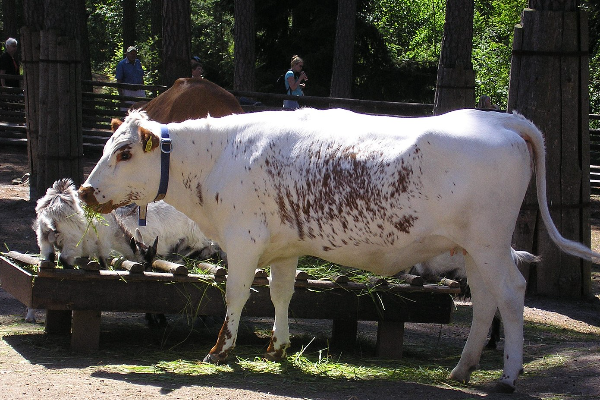
The reasons for preserving the remnants of old native breeds are culture/historical, nature conservation, an economy based on domestic production, living gene-bank.
Culture/historical: These cattle were very important for agriculture in Sweden in the past. It is as important to preserve old living domestic livestock, as it is to preserve old objects and buildings.
Nature conservation: These cattle are often hardy and well adapted for extensive production, i.e. good foragers and very active. This makes them well suited for grazing on fields and woods in national parks, etc.
Economy based on domestic production: In Sweden young families often want to move to the countryside to grow their own vegetables, produce milk and meat in an ecological way. They only need one or two cows and these cattle can be well suited for this purpose.
Living gene-bank: We keep these cattle as a living gene-bank, sort of a gene-stock to be used in the future if the breeding of modern breeds go wrong.
How Many Do Allmogeko Breeds Exist?
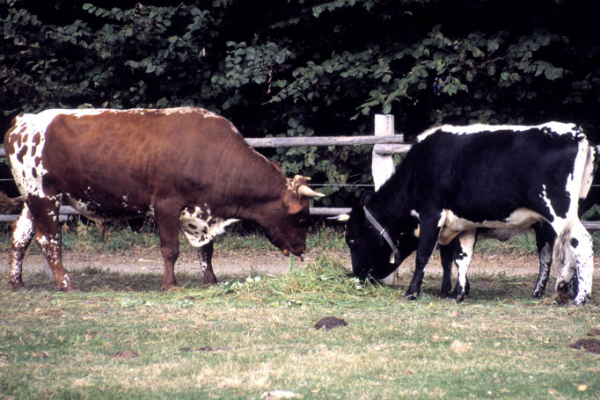
There exist several old Allmogeko breeds. The official studbook keeper for the most is the Föreningen Allmogekon, the union Allmogeko.
However, they are currently focused on the conservation of three races and also leads only to this breed books: Bohuskulla, Ringamålako, Väneko.
Bohuskulla Breed
The Bohuskulla is an endangered Swedish breed of hornless mountain cattle.
It originates from the area of the KynnefjällBohuslän and Dalsland, in western Sweden.
It is a traditional domestic Swedish breed and derives from a group of cattle discovered in the 1990s in Skepplanda, in Västergötland, close to the border with Bohuslän. Microsatellite analysis has shown it to be closely related to the Fjällko mountain cattle of Sweden.
Ringamålako Breed
The Ringamålako is an endangered Swedish breed of dairy cattle. It is named for the village of Ringamåla in the southern Swedish county of Blekinge and is found primarily in southern Sweden.
It is similar to the type of Swedish Red-and-White cattle of the 1940s and is considered a valuable genetic resource.
Väneko Breed
The Väneko is an endangered Swedish breed of dairy cattle. It is named for the village of Väne-Ryr in the landscape of Västergötland, in western Sweden.
It is a traditional domestic Swedish breed and derives from a group of cattle discovered in the 1990s, at a time when all traditional Swedish horned cattle were thought to have disappeared.
What Is The History Of Allmogeko Cattle Including Three Main Breeds?
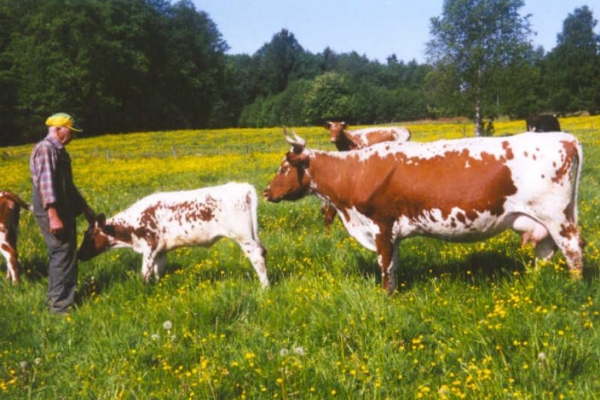
Bohuskulla Breed
The Bohuskulla is a traditional domestic Swedish breed. Microsatellite analysis has shown it to be closely related to the Fjällko mountain cattle of Sweden; however, unlike the Fjällko, it is polled, hornless.It originates from the barren pasture land of the Kynnefjäll plateau in northern Bohuslän and Dalsland, in western Sweden. Many were exported to Norway in the late nineteenth and early twentieth centuries.
Ringamålako Breed
The Ringamålako is a traditional domestic Swedish breed. It is named for the småort of Ringamåla in the southern Swedish county of Blekinge, where a farming couple had maintained a closed herd of the animals for more than forty years.
It is thought to be similar to the type of Swedish Red-and-White (Swedish: Svensk Röd och Vit Boskap or SRB) cattle that were raised in the 1940s. Like the Swedish Red-and-White, it derives from the former Swedish Red Pied and Swedish Ayrshire breeds.
The Ringamålako population was isolated from other dairy breeds for many years and is considered to be a valuable genetic resource. There is a program of recovery and conservation of the breed. The Ringamålako herd-book was established in 1993.
The Ringamålako is grouped with two other endangered indigenous cattle breeds, the Väneko and the Bohuskulla, as Allmogekor, or roughly "Swedish native cattle". Conservation and registration of these populations is managed by society, the Föreningen Allmogekon.
In 2014 the total Ringamålako population was reported to be 164.
Väneko Breed
The Väneko is a traditional domestic Swedish breed. It is named for the village of Väne-Ryrin the Vänersborg Municipality of Västra Götaland, in the landscape of Västergötland in western Sweden.
It derives from a group of cattle discovered in the 1990s, at a time when all traditional Swedish horned cattle were thought to have disappeared. There is a program of recovery and conservation of the breed. A herd-book for the breed was established in 1993.
The Väneko is grouped with two other endangered indigenous cattle breeds, the Ringamålako and the Bohuskulla, as Allmogekor, or roughly "Swedish native cattle". Conservation and registration of these populations are managed by society, the Föreningen Allmogekon.
In 2014 the total Väneko population was reported to be 190.
What Are The Characteristics Of Allmogeko Cattle?
- These cattle are resistant, healthy and self-sufficient and thus ideally suited for extensive free range on meadows and in open woods.
- These cattle were used as dual- to triple-purpose breeds, i. e. as breeds that served as draft animals, dairy cattle, and beef suppliers.
- No longer able to compete with modern single-purpose breeds in
terms of profit maximization, they are preserved as a cultural heritage, as living gene banks,
and as extensive care cattle suited both for young Swedish
back-to-the-country families and for conservation projects.
Bohuskulla Breed
- The Bohuskulla has the typical qualities of mountain cattle: it is agile, fertile, and calves easily. The coat is variable; it is often color-sided, either black or brown.
- Like the other Allmogeko breeds, the Bohuskulla is not very productive.
Ringamålako Breed
- The coat of the Ringamålako is multi-colored red and white.
- The Ringamålako is a dual-purpose breed, kept both for its milk and for its meat; it is, however, not very productive.
- The only breeding aim is the preservation of the breed without contamination from other breeds. It is maintained as a genetic resource for the Swedish Red-and-White, and for social and cultural reasons. It may be used in vegetation management.
- A small number are kept, together with sheep of the endangered Roslag breed, at pasture at the Bokö Nature Reserve in the Östergötland archipelago.
Väneko Breed
- The coat of the Väneko is multi-colored, black or red, sometimes with white; the cattle may be solid-colored, red or black pied, or color-sided.
- The Väneko is a dairy breed, kept principally for its milk; it is, however, not very productive.
- The only breeding aim is the preservation of the breed without contamination from other breeds. It is maintained for social and cultural reasons and may be used in vegetation management.
What Is The Weight Of Allmogeko Cattle Including Three Main Breeds?
Bohuskulla Breed
Bulls weigh approximately 600 kg, cows about 425 kg.
Ringamålako Breed
Bulls weigh approximately 750 kg, cows about 500 kg.
Väneko Breed
Bulls
weigh approximately 775 kg, cows about 525 kg.
https://en.wikipedia.org
http://afs.okstate.edu
https://memim.com
https://wikivisually.com
https://en.linkfang.org

Written by
Researcher Ghost Writer
EditorBreedsMore
IllnessesMore
Forage cropsMore
![]() Патологическая физиология голодания Arina TARAN
Патологическая физиология голодания Arina TARAN![]() Дефицит фосфора (гипофосфатемия) Hipofosfatemi Arina TARAN
Дефицит фосфора (гипофосфатемия) Hipofosfatemi Arina TARAN![]() Какие бывают кормораздатчики для ферм КРС? Irina Makarova
Какие бывают кормораздатчики для ферм КРС? Irina Makarova![]() Кормушки для овец Diana Myakisheva
Кормушки для овец Diana Myakisheva![]() Питание домашних коз: что едят, виды корма и правила кормления Alina Arslantürk
Питание домашних коз: что едят, виды корма и правила кормления Alina Arslantürk![]() Важность минералов питании сельскохозяйственных животных Irina Makarova
Важность минералов питании сельскохозяйственных животных Irina Makarova

